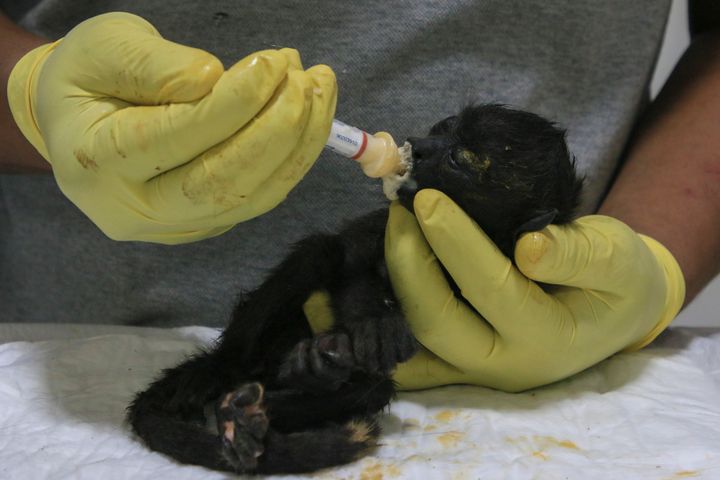MEXICO CITY (AP) — It’s so hot in Mexico that howler monkeys are falling dead from the trees.
At least 138 of the midsize primates, who are known for their roaring vocal calls, were found dead in the Gulf Coast state of Tabasco since May 16, according to the Biodiversity Conservation of The Usumacinta group.
Others were rescued by residents, including five that were rushed to a local veterinarian who battled to save them.
“They arrived in critical condition, with dehydration and fever,” said Dr. Sergio Valenzuela. “They were as limp as rags. It was heatstroke.”
While Mexico’s brutal heat wave has been linked to the deaths of at least 26 people since March, veterinarians and rescuers say it has killed dozens and perhaps hundreds of howler monkeys. Around a third of the country saw highs of 45 degrees Celsius (113 degrees Fahrenheit) on Tuesday.
In the town of Tecolutilla, Tabasco, the dead monkeys started appearing Friday, when a local volunteer fire-and-rescue squad showed up with five of the creatures in the bed of a truck.
Normally quite intimidating, howler monkeys are muscular and some can be as tall as 90 centimeters (3 feet), with tails just as long.
Some males weigh more than 13.5 kilograms (30 pounds) and can live up to 20 years. They are equipped with big jaws and a fearsome set of teeth and fangs. But mostly they’re known for their lion-like roars, which bely their size.
“They (the volunteers) asked for help, they asked if I could examine some of the animals they had in their truck,” Valenzuela said Monday. “They said they didn’t have any money, and asked if I could do it for free.”
The veterinarian put ice on their limp little hands and feet, and hooked them up to IV drips with electrolytes.
So far, the monkeys appear to be on the mend. Once listless and easily handled, they are now in cages at Valenzuela’s office. “They’re recovering. They’re aggressive … they’re biting again,” he said, noting that’s a healthy sign for the usually furtive creatures.
Most aren’t so lucky. Wildlife biologist Gilberto Pozo counted about 138 of the animals dead or dying on the ground under trees. The die-off started around May 5 and hit its peak over the weekend.
“They were falling out of the trees like apples,” Pozo said. “They were in a state of severe dehydration, and they…
Click Here to Read the Full Original Article at World News…

